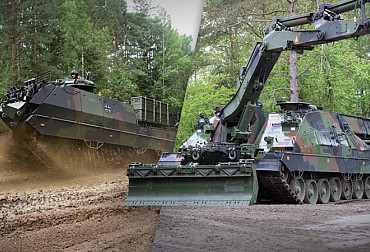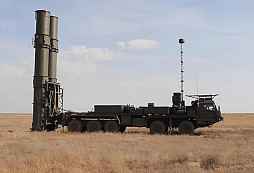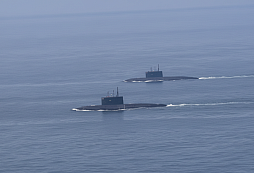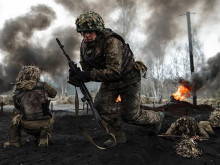Use of cluster munition on the Ukrainian battlefield
Kiev is within reach of another key Western aid promise - US ATACMS tactical ballistic missiles that can hit Russian targets far behind the front. The early delivery was confirmed to the Ukrainian head of state by US President Joe Biden in Washington. It should be a version with cluster munition, which are known for their devastating effect against manpower and are banned in many countries. The Czech Republic pledged not to use the controversial cluster munition and to phase them out with the adoption of the Dublin Convention in 2008, yet it has no objection to the currently promised US deliveries.
Ukraine's negotiations with the US over long-range missiles have been ongoing for many months. According to unnamed US government and congressional officials, the US president recently announced to his Ukrainian counterpart Volodymyr Zelensky the imminent delivery of a small number of Army Tactical Missile System (ATACMS) missiles which, like the promised F-16 fighter jets, could mark another breakthrough in the liberation of Russian-occupied areas of Ukraine.
The tactical ballistic missiles have the capability to strike targets at a range of up to 300 kilometres and thus substantially increase the range of Ukraine's existing missiles, which, especially recently, Kiev has been replacing mainly with drones. Ukraine could thus destroy entire bases and logistical centres of the Russian aggressor on Ukrainian territory and beyond. Moreover, launching from vehicles makes the whole system highly mobile and thus advantageous for quick reversals on the battlefield.
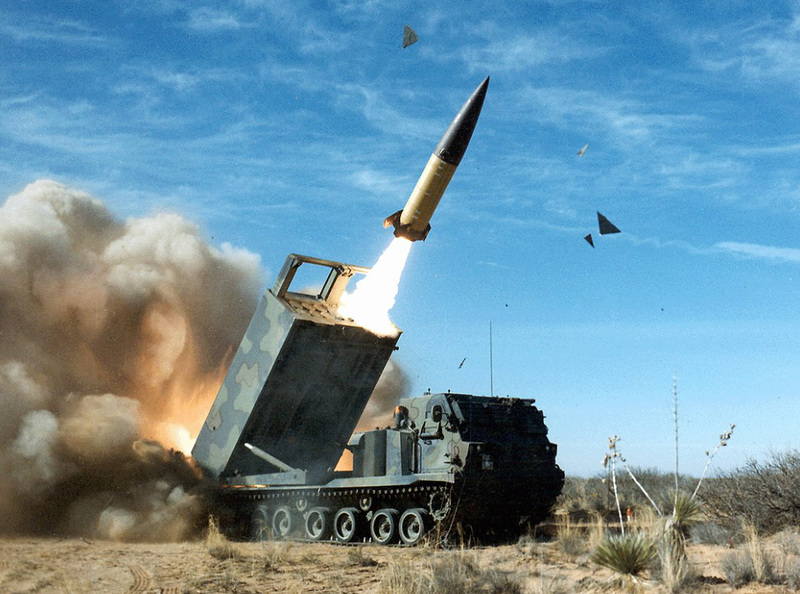
As part of the system, then, the Americans should supply the Ukrainians not with single-warhead missiles, but with cluster bombs, missiles capable of carrying a variety of smaller bombs that can be spread over a larger area and are suited specifically for widespread destruction. Ukrainian forces have been using M864 and M483A1 artillery cluster munition since July, but these missiles have a shorter range.
"It's literally like a firefight out there, they are running out of supplies. We are trying to increase our production of the artillery shells they use most often. But the rate of production is still not where we want it to be," White House security spokesman John Kirby defended the US decision to provide Ukraine with cluster munition back in July, saying the US did not have enough other munitions. The US is one of the few countries that can officially dispose of cluster munition. These munitions have devastating properties and are particularly dangerous to civilians, where they can directly threaten their lives in an area bombing, while also contaminating large areas with possible unexploded bombs. It was this fact that initiated the international debate in 2007 on the restriction and banning of cluster munition.
Neither Russia nor the US accepted the convention
After the Oslo Conference, the so-called Convention on Cluster Munition was adopted in Dublin in 2008, to which 123 countries around the world committed themselves and which 111 of them, including the Czech Republic, ratified, although it was negotiated outside the UN framework. The Convention prohibits 'the use, development, production, stockpiling, possession and transfer of cluster munition that cause unacceptable harm to civilians'. However, the main countries that produce and use cluster munition, such as Russia, the USA, China, India, Israel and Pakistan, have not signed the convention.
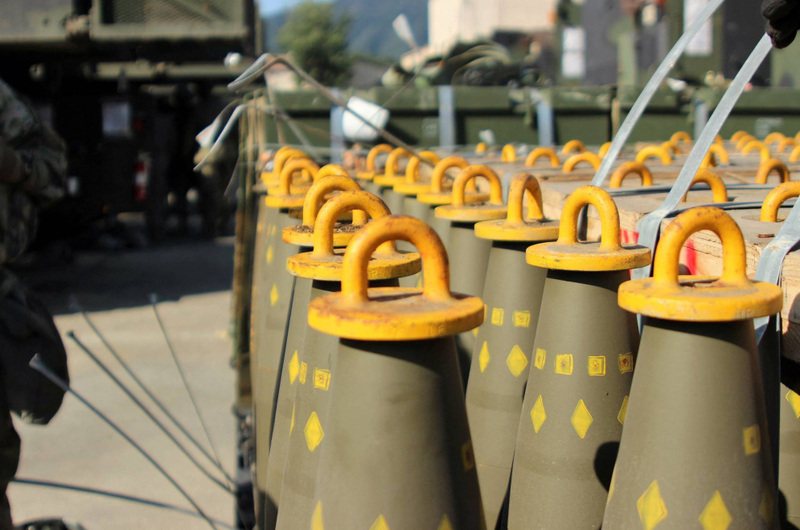
The Czech Republic was one of the countries that had already begun the process of phasing out cluster munition at the time of the debate on whether to restrict or ban them. "All types of such cluster munition introduced in the past into the armament of the Czech Army have already been decommissioned and disposed of or their disposal is underway. As of April 2008, 67 containers and 16 482 submunitions of Soviet-made KMG-U and RBK cluster munition remained to be disposed of, and according to the plan they should be disposed of by the end of 2011. This material has a book value of CZK 2 628 836 and the total cost of its disposal should reach approximately CZK 11 300 000," the Czech Army said in April 2008.
However, the decision of the US allies to supply Ukraine with this type of controversial ammunition is supported by the Czech Army. "Modern tanks, ballistic missiles capable of providing the Ukrainians with a few kilometres more range, cluster munition suitable for use against a buried enemy, modern fighter jets, all this is presented by Russia as an unacceptable escalation. What does it matter that they are clearly outnumbered in tanks and air force, that their missiles have been destroying civilian targets all over Ukraine since the beginning of the war, and that the cluster munition they are now demonizing have not been shy about using against Ukrainian cities from the beginning," the Czech Army's Information and Cyber Forces Command wrote on the X network (formerly Twitter) in late July.
The first use of cluster munition on the territory of its own state
The devastating impact on the areas where cluster munition have been used is then the main argument of the Dublin Convention. It is thus surprising to many that the Ukrainians are willing, probably as the first state in history, to deploy this type of weapon on their own territory. However, since the beginning of the discussions, the Ukrainians have stated that they have used and will use cluster bombs only against military targets and that they will carefully document the areas of deployment in order to be able to clear them after the war. The Americans then add that their munitions have much less dispersion than those used by the enemy.
Human Rights Watch (HRW) has drawn attention to repeated instances of the use of cluster munition by the Russian army in Ukraine since the very beginning of the invasion, when the use of these munitions has resulted in heavy casualties, particularly among the civilian population. These included attacks in Vuhledar, and later in Kharkiv, Mykolaiv, Chernihiv, Kherson, Kramatorsk and other cities. In at least one case, a Ukrainian-made cluster bomb, probably of Soviet manufacture, was also mistakenly used to kill civilians in Russian-controlled territory, according to HRW, near Izjum last year.
In its latest report, released in September this year, the international civil society movement Cluster Munition Coalition says that Ukraine has even surpassed war-torn Syria in the number of cluster bomb casualties. In 2022, 300 people reportedly died in Ukraine and another 600 were injured in these Russian attacks in the occupied country. In Syria, the death toll was many times lower - 15 dead and 75 wounded.
The Russian army is not breaking international law by using cluster munition, but by using them even in areas with a high concentration of civilians
Regarding the so-called banned munitions, including cluster munition, we asked Colonel Otakar Foltýn, an expert on international law and hybrid conflicts:
What does "banned munitions" mean in practice? Can you give specific examples?
This is a commonly used phrase for weapons and ammunition that are either completely banned by international law or restricted in some way. A textbook example is projectiles known in layman's terms as dum-dums, i.e. handgun projectiles that are deliberately flattened or reshaped in the human body to cause increased injury. Another example is, of course, chemical and biological weapons, where the details probably do not need to be explained. Contrary to the common lay perception that there are no rules in war, compliance with, for example, the above prohibitions is widely respected and usually (though not perfectly) observed. Moreover, there are exceptions, for example, projectiles with increased vulnerability or certain chemical agents (tear gas) may be used for police purposes.
Does it even make sense to ban some weapons? Isn't that naive?
On the contrary, it's very rational and, despite the general idea, not naive sun-mongering at all. The whole point is to avoid unnecessary suffering that is not necessary to defeat the enemy. Take the example of the ban on chemical weapons. The suffering of a soldier with a pneumothorax of the lungs caused by a shrapnel from an artillery shell is not much different from the suffering of a soldier with lungs burned by yperite, both suffocating. In practice, however, chemical munitions proved to be not so effective during the First World War, they do not solve trench warfare, they are difficult to store, and they are expensive. In real terms, it caused less than 2% of casualties. So, purely technically, it wasn't very effective. On the other hand, public opinion felt very strongly about the centuries-old custom prohibiting the use of poisons. The result was a ban on the use of chemical weapons that satisfied public opinion while not reducing the ability to conduct combat. Standard artillery shells cause up to 75% of casualties in higher intensity conflicts. These, of course, have not been banned. And no one could, precisely because of how effective a military tool it is, states will never ban their use.
Who decides (individual states or the community of states) what munitions are "banned" and on what basis?
International law is, of course, made by states, and some international organisations such as the United Nations, the International Committee of the Red Cross or UNESCO have some indirect influence. But the basis is the will of states expressed either by the creation of international custom or by the conclusion of international treaties. The prerequisite for a rule to become a custom is universal observance and the longevity of real compliance. Simply, if there is a general belief in the prohibition of a means or method of warfare and such a rule is generally observed, it becomes globally binding. Even for those who have not adhered to a particular convention. Logically, however, a far more common source of law is the conclusion of a treaty, that is, the formally expressed will of states to be bound by a rule. In this context, it is important to note that states as a rule accept only those obligations that can be kept and, conversely, will not agree to rules that would prevent them from conducting effective hostilities.
Which states abide by the rules of non-use of 'prohibited munitions'?
If we are talking about prohibitions that have become international custom, then, given the above, the majority abide by the prohibitions. As I explained above, prohibited munitions are those that cause unnecessary suffering without providing meaningful military benefit. It is different for weapons or munitions that have only recently been banned by international treaties, so they are not customary and apply only to states that have acceded to the relevant convention. Typically these are anti-personnel mines and cluster munition. There, however, it is clear that anti-personnel mines have an effective substitute in guided booby traps, self-destruction or new technologies, thanks to innovations. In contrast, the ban on cluster munition has come at a time when similarly effective substitutes (such as drone swarms) are not yet available and cheap enough to replace cluster munition. This is why the major states have not acceded to the ban. If Russia and Ukraine are using cluster munition today, this is not a violation of international law. Nor is it in the case of the Russian military. It is not violating international law by using cluster munition, but by using them in areas with a high concentration of civilians.
For example, in a particular conflict, can one of the belligerents lift the 'ban' on a particular munition because it assesses that it lacks the capability of that munition?
The possibility of withdrawing from a treaty obligation is not excluded, but in practice this hardly happens in the case of "banned" weapons. Indeed, the law of armed conflict works the same for both sides. Both benefit from complying with it. And vice versa.
Who and what is the ability to force a party to a conflict to comply with its own, or international, set of legal norms regarding "prohibited munitions"?
In the first place, it is the practical reason described above. Both sides know that if violated, the consequences may very soon affect them. Soldiers on both sides have an interest in not killing prisoners because they rightly fear that the other side will subsequently start doing so. The same exists in the case of 'banned' weapons. Legally, of course, there is the possibility of prosecution both at national level and before international tribunals such as the Nuremberg or Tokyo tribunals, or the currently permanent international criminal tribunal. If you object that it takes a long time, you are right. But that is precisely why war crimes are not time-barred.
















